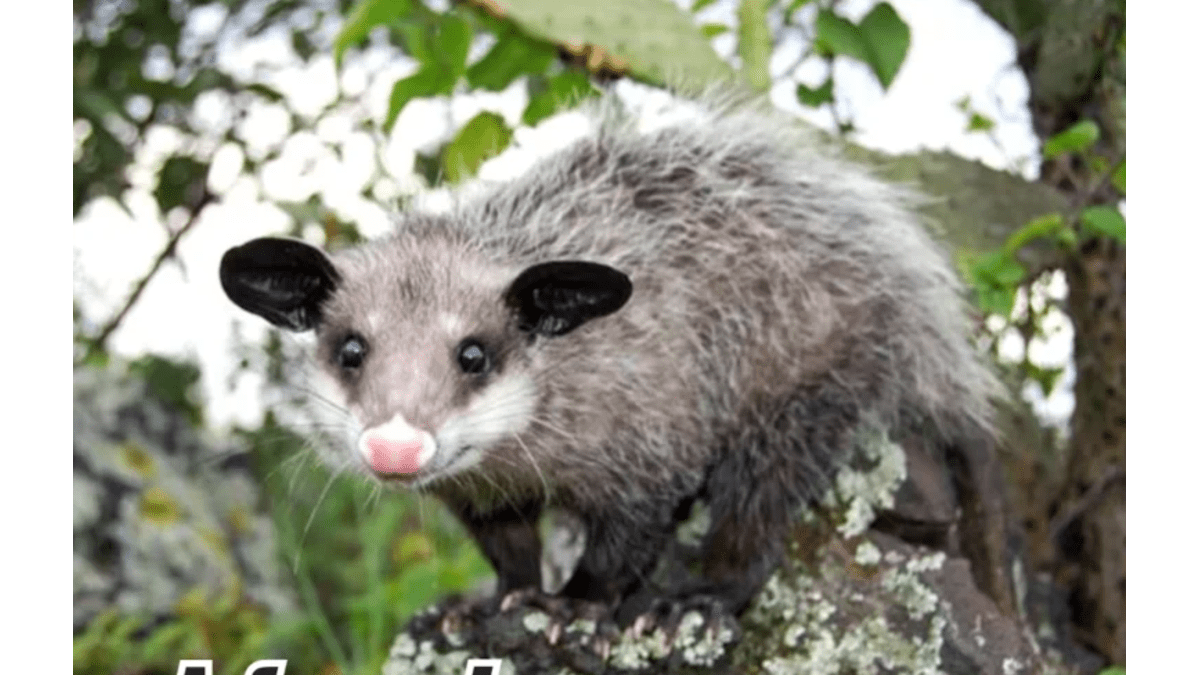Introduction
The tñacuache, or opossum in English, is a captivating creature that plays a vital role in the American ecosystem. Though regularly misunderstood and underappreciated, marsupials offer numerous advantages to their surroundings and present a unique challenge to wildlife fans and biologists. This newsletter explores the fascinating world of this creature, its behavior, habitat, and importance in herbal medicine.
Origins and Classification
Tacuache belonged to Didelphidae, which encompasses over a hundred species. They are native to the Americas, ranging from southern Canada through the United States to South America. North America’s most well-known species is the Virginia opossum (Didelphis virginiana).
Physical Characteristics
Tacuaches have opposable thumbs, prehensile tails, and sharp enamel. They have a white face, grayish body fur, and long, hairless tails. Depending on the species, some can reach the dimensions of a domestic cat. Night vision and their keen sense of smell are valuable resources for their nocturnal lifestyle.
Behavior and Lifestyle
Because they are nocturnal animals, they are primarily active at night. Instead of foraging in corporations, they may be solitary creatures. Fruits, bugs, small mammals, and carrion comprise their omnivorous diet. By manipulating insect populations and eliminating lifeless animals, these diets contribute to the atmosphere.
Reproductive Habits
Tñacuaches are marsupials, which means they create and nurse young in pouches. Gestation lasts about 12-13 days. In their mother’s pouch, the tiny, underdeveloped young ones continue to grow. It is common for a mother to start many offspring, but not all live to maturity.
Defense Mechanisms
This creature can enter a catatonic mode when threatened, which mimics death, by “playing read” or “playing put.”. Those who stay prey can experience this involuntary reaction for several hours. Additionally, their anal glands emit a bad-smelling fluid to deter attackers.
Habitat and Distribution
Adaptable to various environments, including forests, grasslands, and urban areas. Professional climbers who take refuge in trees or abandoned burrows. In suburban and concrete areas, they are regularly found scavenging due to their adaptability.
Role in the Ecosystem
Acuache plays a multifaceted ecological role. They feed on waste and useless animals to hold their habitat quickly. They also control pest populations, rodents, and insects. Furthermore, their droppings contribute to plant propagation and forest regeneration by dispersing seeds.
Misconceptions and Myths
Although they are helpful, tñacuaches are frequently misunderstood. There is a misconception that they are dirty or aggressive. These are incredibly smooth animals that groom themselves regularly. When cornered or threatened, they will often act defensively.
Health and Diseases
Tñacuaches are noticeably less susceptible to rabies than mammals, which is not uncommon for humans. Their body temperature is lower than other heat-blooded animals, which may inhibit the virus. Nevertheless, they can carry different illnesses, including leptospirosis and toxoplasmosis, so caution is advised.
Conservation Status
Because of their adaptability and reproductive success, maximum species of tagua are not endangered. The destruction of habitat and avenue mortality threaten their populations. To ensure their survival, conservation efforts focus on protecting herbal habitats and reducing human-nature conflicts.
Cultural Significance
Folklore and mythology contain symbolic meanings associated with coaches. A few indigenous cultures of the Americas see them as tricksters or clever survivors. Learning about their cultural views can enhance our appreciation of these creatures.
Research and Studies
Scientists continue to study their behavior, body structure, and ecological impact. In recent years, research has focused on their role in controlling tick populations, which reduces the spread of Lyme disease. In such studies, we learn how vital coaches are for ecological balance.
Human-Wildlife Interaction
Urbanization has increased interactions between these creatures and humans. These animals can sometimes be considered pests, but finding humane solutions is crucial. Unwanted encounters can be reduced by securing trash boxes and removing food assets.
Pest Control Benefits
Their diet makes them herbal pest controllers. They control insect, rodent, and pest populations by ingesting them. The natural shape of pest manipulation reduces the need for chemical insecticides.
Manage wildlife ethically
A robust flora and fauna control strategy must consider the moral remedy of tñacuaches. Humane methods are used to control nuisance animals and protect their herbal habitats. Biodiversity and ecological balance require ethical considerations.
Legal Protections
Legal guidelines for flora and fauna conservation include these. They protect their habitats and populations while dealing with human-wildlife conflicts. Their long-term conservation depends on understanding and adhering to these legal guidelines.
Future Research Directions
Future research may focus on their ecological roles, responses to environmental changes, and interactions with other species. We can tell conservation techniques better with advancements in generation and method.
Community Involvement
Network involvement is crucial to hit conservation. Citizens can participate in habitat restoration initiatives, educational programs, and technological know-how tasks. Public engagement fosters stewardship and promotes proactive conservation.
Global Significance
Even though the tñacuache is an American species, its observation has global significance. Ecological roles and behaviors can provide insights into broader ecological concepts and contribute to international biodiversity conservation.
Conclusion
The tñacuache plays an essential role in the ecosystems of the Americas. These adaptable creatures thrive in a variety of environments. We can better defend and coexist with them by understanding and appreciating their ecological significance. “Utanmaz Türklere”: The Spirit of the Untamed Turks
